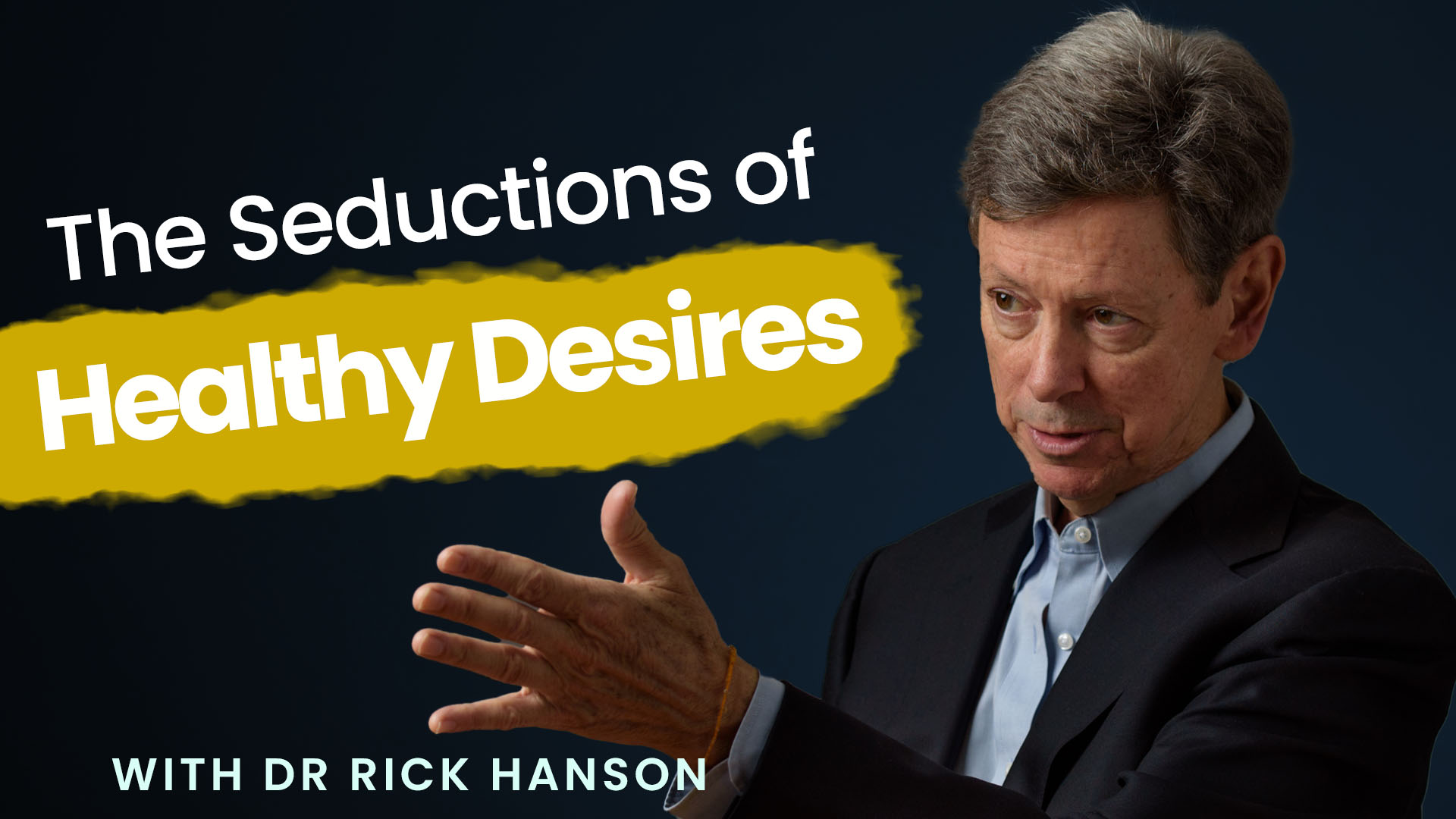From the Blog
Writings on Well-Being Dr. Rick Hanson

Talk + Meditation: The Seductions of Healthy Desires
Feeling overwhelmed, always striving, or burnt out—even from good intentions? Learn how to stay centered and content through your core practice.
Get these articles delivered directly to your inbox every week.
"*" indicates required fields
The Importance of Taking In Positive Experiences
With practice we can change our brains, and our lives, for the better.
Friday Favorite
Nature's beauty can be easily missed — but not through Louie Schwartzberg's lens. His stunning time-lapse photography, accompanied by powerful words from Benedictine monk Brother David Steindl-Rast, serves as a meditation on being grateful for every day. (Filmed at...
What is the Mind?
What is the reason for the remarkable complexity, speed, activity, and evolution of the brain? It is the mind. By “mind,” I mean the flows of information within the brain; a synonymous term is “mental activity.” Much as the function of the heart is to move blood...
Friday Favorite
I thought you might enjoy these murals adapted from my presentation on Positive Neuroplasticity at the Hudson Institute of Coaching earlier this month. They were illustrated by Nancy Turner, Graphic Recorder/Facilitator, phrases@fuse.net.
Creating a Field Guide to the Human Brain
Guest post by Randy Roark, Producer for Sounds True. I’ve recently returned from recording a new program with Rick Hanson in Corte Madera, California. I first worked with Rick and his co-author Rick Mendius in 2009, when we recorded Meditations to Change Your Brain...
Last month at the Psychotherapy Networker Symposium in Washington DC, I gave a talk to ~ 3500 people: scary but wonderful! Brain Science and Psychotherapy: The Next Step – looked at the benefits and pitfalls of brain science, plus focused on a key point: if we don’t take the time to install our useful experiences, they’re wasted on the brain; they’re momentarily pleasant but lead to no learning, no healing, no growth. Then I summarized HOW to turn passing experiences into lasting value.
Focusing on the Positive
Q: If you focus on the positive for long enough, does it actually make your brain more receptive to doing that? Turn it into “velcro” for happiness, to use your expression? A: Research shows that repeated practice of any positive behavior (e.g., gratitude) will...
Intention of Non-Ill Will
Here we give up angry, punishing reactions toward others, animals, plants, and things. If such attitudes arise, we resolve not to feed them, and to cut them off as fast as we can. The Buddha placed great stress on the importance of releasing ill will. In the extreme,...
Key Points of Letting Go
"Let go a little, you'll have a little happiness. Let go completely, you'll be completely happy." Letting Go of Body Sensations Ordinary breathing, focusing on exhalation, intending to let go. Diaphragm breathing. Breath of fire. Heartmath: Breathing evenly through...
Is the “Self” Real?
Is the “Self” real? What’s the nature of the sense of being that remains when parts of the psyche fall away? The answer depends on how you define “Self.” I use that word to refer to the central “I” that’s presumed in Western psychology and philosophy (and everyday...
The Effect of Relationships on the Evolving Human Brain
Your brain is the product of 3.5 billion years of intense evolutionary pressure, including 2.7 million years as tool-using hominids and over 100,000 years as homo sapiens. Human DNA is about 98-99% identical to chimpanzee DNA. But that crucial 1-2% difference is...
What is the Best Time of Day to Meditate?
What is the Best Time of Day to Meditate? In all the studies (and reviews of studies) I’ve seen on meditation, I’ve never seen anything scientific about best time of day to meditate. Maybe it exists, but I’ve never heard of it. From the standpoint of a long-time...
Brain Facts
Did you know? Neurons typically fire 5 – 50 times a second, with millions and even billions of them pulsing in harmony with each other many times a second; the electrical currents of that pulsing are revealed as brain waves in an EEG. In the half second it takes you...
Intention of Harmlessness
This is a broad aim of not causing pain, loss, or destruction to any living thing. At a minimum, this is a sweeping resolution to avoid any whit of harm to another human being. The implications are far-reaching, since most of us participate daily in activities whose...
Right Intention
Of course, the first question regarding intention is, for what? All the great wisdom traditions of the world, and all the great moral philosophers, have grappled with this question. What should we want? There are many ways to approach this question. Some try to answer...
Developing a “Buddha Brain” Through Gratitude
What role does gratitude play in developing a “buddha brain” and why? A ”buddha brain” is one that knows how to be deeply happy, loving, and wise. We develop ourselves in this way by cultivating wholesome qualities and uprooting unwholesome ones. In a sense, we plant...
Wholesome Intentions – The Neurology of Intention
Our intentions arise in the brain, are represented in the brain, and are pursued in the brain. Where else? Therefore, a basic understanding of how intentions work in the brain – and thus in your mind – is a very useful thing to have. The Executive Functions The brain...
How to Change Your Brain
In this video, I explain how mindfulness meditation can strengthen our brains and help us focus our attention. This video was taken at the Greater Good Science Center in UC Berkeley as part of the Science of a Meaningful Life Series. Take a look and let me know what...
Wholesome Intentions
These statements about reality, about the way things really are, are central to Buddhism, and you can test them for yourself: Everything happens because of preceding causes. Everything, both inside our minds and outside in the world. Those causes lead to results that...
Free Hardwiring Happiness Reading Guide Now Available!
I've created a reading guide for my book, Hardwiring Happiness, to take you through the concepts and details of each chapter, offering more opportunities to practice, reflect and apply the teachings to your every day life. The reading guide is a helpful resource for...
Key Points of Awareness – Part II
Visit Part I of this blog post here. Concentration Concentration has two central factors: applying attention to an object and sustaining it there, like an ice skater plants her foot (applying) and then glides along (sustaining). When you practice formal concentration,...
